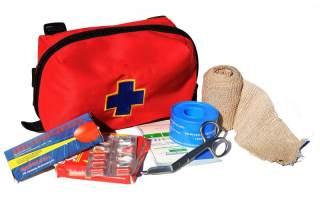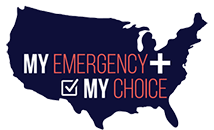Creating a First Aid Kit for Your Car

Having a First Aid Kit handy is important. If there’s one thing you can be sure of, it’s that you’ll most need something when you don’t have it. You know how it goes: you don’t use an item for years while it gathers dust on a shelf, then as soon as you chuck it out it becomes the one vital piece of kit you can’t do without.
First aid kits are a little different, but much the same principle exists. When you have one it can lie untouched for months, if not years. If you don’t have one, the slightest accident can become a crisis. From grazed knees to cuts and bruises and insect bites, a simple band aid or dab of antiseptic cream can save the day.
Of course, there are more pressing concerns if you have allergies or ongoing chronic conditions that flare up without warning, so a basic, personalized, first aid kit in your car provides your own traveling, mini emergency room.
An added bonus is that with your first aid kit, you could give aid to someone else who needs it.
What to Include in Your First Aid Kit
Pain Killers – over the counter pain killers such as Paracetamol or Ibuprofen are indispensable. Paracetamol will help lessen all kinds of pain, while ibuprofen is also an anti-inflammatory.
Bandages and Band-Aids — you should include elasticated and crepe bandages in various widths, and a selection of band aid sizes for smaller cuts and grazes. In the same category are gauze dressing pads, although to include every variation of wound dressing you’d need a huge container.
Small first aid kits need just the most commonly used dressings to cover wounds or stem blood flow. If you need more specialist equipment, you should call for emergency help.
Adhesive Tape and Safety Pins — useful for securing dressings, but also handy in non-medical situations such as popped buttons or zippers on clothing.
Cold Packs — a couple of the type you activate with a snap are handy for swellings or sprains, but are also useful as a cold compress for headaches.
Creams and Lotions — you should include antiseptic cream or ointment to help prevent infection in cuts and to ease insect stings. Some contain a local anesthetic that is especially comforting for kid’s stings or bites. It’s also handy to have anti-burn gel with aloe vera, which can relieve sunburn as well as light, direct burns.
Allergy Medication — if anyone in the family has allergies, regularly takes prescribed medication, or has particular medical needs, pack spares into the first aid kit. If you’re delayed on a journey, or anyone accidentally leaves needed meds at home, you’ve got it covered.
Hygiene Supplies — pack a bottle of antiseptic hand cleaning gel so you can sanitize your hands before dressing wounds. Disposable latex gloves are also handy when dealing with messy situations or to avoid spreading infections. You could include cotton swabs and antiseptic wipes.
Small tools — a pair of scissors is useful, as are tweezers, a needle and thread and a medicine measuring cup.
Saline solution — needed to rinse and cleanse wounds before dressing. Children’s scraped knees, for instance, often harbor bits of grit or dirt.
Contact Lists and Emergency Numbers — it takes up no space, but a sheet of paper with all your numbers written down means you don’t have to rely on memory in an emergency. It also means anyone caring for you can contact your nearest and dearest or your care providers. Include brief medical histories, such as allergy information or vital medications such as for diabetes or a heart condition.
Baby Medications — if you need them. Include baby wipes and infant versions of adult medications.
Organizing Your First Aid Kit
Having it all won’t help if you have to rummage through everything to find what you need. Choose a container big enough to hold everything, but small enough to be portable. Hobby or fishing tackle boxes are ideal as they have trays and compartments to keep small items separate.
If you choose a bag or box with one compartment, stand larger items such as dressings on their sides so you can easily pull them out, then separate smaller items into labeled, sealable plastic bags arranged around the outside of the larger items. The aim is to keep everything as visible as possible rather than hiding some beneath others.
When you’re going on a longer road trip, you can extend the basic kit to include items such as a flashlight, a blanket, a box of matches, and drinking water.
Hopefully, you’ll never need to use your first aid kit. For this reason, remember to regularly check medication use-by dates and replace anything close to expiring. If the day comes when you need it, even for a little band aid to comfort a child, you’ll be glad you took the time to prepare.




